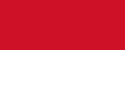Olympische Sommerspiele 1952
 | |
| Austragungsort: | Helsinki (Finnland) |
| Stadion: | Olympiastadion Helsinki |
| Eröffnungsfeier: | 19. Juli 1952 |
| Schlussfeier: | 3. August 1952 |
| Eröffnet durch: | Juho Kusti Paasikivi (Staatspräsident) |
| Olympischer Eid: | Heikki Savolainen (Sportler) |
| Disziplinen: | 23 (17 Sportarten) |
| Wettkämpfe: | 149 |
| Länder: | 69 |
| Athleten: | 4955 (4436 |
| ← London 1948 | |
| Stockholm 1956 (Reiterspiele) → | |
| Medaillenspiegel | |||||
|---|---|---|---|---|---|
| Platz | Land | G | S | B | Ges. |
| 1 | 40 | 19 | 17 | 76 | |
| 2 | 22 | 30 | 19 | 71 | |
| 3 | 16 | 10 | 16 | 42 | |
| 4 | 12 | 13 | 10 | 35 | |
| 5 | 8 | 9 | 4 | 23 | |
| 6 | 7 | 3 | 3 | 13 | |
| 7 | 6 | 6 | 6 | 18 | |
| 8 | 6 | 3 | 13 | 22 | |
| 9 | 6 | 2 | 3 | 11 | |
| 10 | 3 | 2 | – | 5 | |
| 11 | 2 | 6 | 6 | 14 | |
| … | … | … | … | … | … |
| 28 | – | 7 | 17 | 24 | |
| 32 | – | 1 | 1 | 2 | |
| Vollständiger Medaillenspiegel | |||||


Die Olympischen Sommerspiele 1952 (offiziell Spiele der XV. Olympiade genannt) fanden vom 19. Juli bis 3. August 1952 in Helsinki statt, der Hauptstadt Finnlands. Hauptwettkampfstätte war das Olympiastadion Helsinki. Für die Sowjetunion war es die erste Teilnahme. Mannschaften aus Japan und Deutschland (BRD und Saarland traten separat an, die DDR nahm nicht teil) durften erstmals seit dem Zweiten Weltkrieg wieder teilnehmen.
Helsinki hatte sich bereits für die Olympischen Sommerspiele 1940 beworben und erhielt den Zuschlag, nachdem Tokio diesen wieder zurückgegeben hatte. Bedingt durch den Angriff der Sowjetunion und den Zweiten Weltkrieg mussten die Spiele jedoch abgesagt werden.
Selektion Helsinki
Diese erfolgte am 21. Juni 1947 bei der 40. IOC-Session in Stockholm. Andere Kandidatenstädte waren Los Angeles, Minneapolis, Detroit, Chicago, Philadelphia (alle USA) und Amsterdam (Niederlande).
Herausragende Sportler
- Der Läufer Emil Zátopek aus der Tschechoslowakei stellte einen noch heute gültigen Rekord auf. Nach ihm gelang es keinem anderen, sowohl über 5000 und 10.000 Meter als auch im Marathon eine Goldmedaille bei denselben Olympischen Sommerspielen zu erringen.
- Erfolgreichster Sportler war der sowjetische Kunstturner Wiktor Tschukarin mit vier Goldmedaillen und zwei Silbermedaillen.
Teilnehmer
Insgesamt nahmen 69 Nationen an den Olympischen Sommerspielen 1952 teil und damit mehr als jemals zuvor. Die Einladungen wurden sogar an 80 Nationen geschickt, wobei jedoch nur 73 Anfragen beantwortet wurden. Paraguay und Peru lehnten ab. Die Republik China sagte zunächst zu, zwei Tage vor dem Beginn wurde aber bekannt, dass das Olympische Komitee Athleten der Volksrepublik China ebenfalls zugelassen hatte. Aus Protest sagte die Republik China daraufhin zwei Tage vor Beginn ihre Teilnahme ab. Dies war der Beginn eines lange Jahre andauernden Konflikts zwischen den beiden Nationen bei Olympischen Spielen. Tatsächlich trat die Volksrepublik China erst bei den Olympischen Winterspielen 1980 wieder an.[1] Daneben sagte Haiti ebenfalls seine Teilnahme ab, beschloss jedoch, sich an der an die Spiele angeschlossenen Kunstausstellung zu beteiligen.[2]
Guatemala, Indonesien, Israel, Goldküste (Ghana), Nigeria, Thailand und Vietnam feierten ihr Debüt bei den Olympischen Sommerspielen. Ebenso trat erstmals die Sowjetunion an. Die Vorgängernation Russland hatte zuletzt an den Olympischen Sommerspielen 1912 teilgenommen. Auch erstmals durften die Niederländischen Antillen mit eigener Delegation anreisen. Auf Grund der deutschen Teilung gab es eine Sonderregelung für Deutschland. Sowohl die Bundesrepublik Deutschland als auch die Deutsche Demokratische Republik hatten ein eigenes Nationales Olympisches Komitee gegründet. Jedoch wurde das Nationale Olympische Komitee der DDR nicht vom IOC anerkannt. Vielmehr sollte Deutschland als eine Nation unter der Führung des Nationalen Olympischen Komitee für Deutschland antreten. Dies lehnte die DDR jedoch noch ab und entsandte keine Athleten nach Helsinki.[3] Im Gegensatz zur Situation einer olympischen Delegation für ein Gesamtdeutschland wurde das unter französischer Protektion stehende Saarland bereits 1950 als selbstständige olympische Nation anerkannt und wurde vom IOC für Helsinki eingeladen. Insgesamt 36 Wettkämpfer aus dem Saarland nahmen an den Spielen teil, konnten aber keine Medaille gewinnen.[4]
Während bei den Olympischen Sommerspielen 1948 in London noch eine gesamtkoreanische Mannschaft antrat, wurde Korea diesmal ausschließlich von südkoreanischen Sportlern vertreten.
| Europa (3.471 Athleten aus 30 Nationen) | ||
|---|---|---|
|
|
|
| Amerika (913 Athleten aus 18 Nationen) | ||
|
| |
| Asien (290 Athleten aus 15 Nationen) | ||
|
|
|
| Afrika (288 Athleten aus 4 Nationen) | ||
| ||
| Ozeanien (102 Athleten aus 2 Nationen) | ||
|
| |
| (Anzahl der Athleten) *erstmalige Teilnahme an Sommerspielen | ||
Sonstiges

- Offiziell eröffnet wurden die Spiele durch den finnischen Präsidenten Juho Kusti Paasikivi. Den Athleteneid sprach der finnische Turner Heikki Savolainen. Letzter Fackelträger war der finnische Leichtathlet Hannes Kolehmainen.
- Die bundesdeutsche Mannschaft war unter der Leitung von Siegfried Perrey an der Marinesportschule in Flensburg-Mürwik trainiert worden; es war das letzte Mal, dass diese Schule eine wesentliche Rolle in der Vorbereitung zu Olympischen Sommerspielen einnahm. Während der Spiele wurden 7 Silbermedaillen und 17 Bronzemedaillen errungen, jedoch zum ersten und bisher einzigen Mal bei Sommerspielen keine einzige Goldmedaille.
- Ungarn schnitt mit 42 Medaillen, damit Rang 3 im Medaillenspiegel hinter den beiden „Großen“ (USA, Sowjetunion), hervorragend ab.
- Den einzigen Olympiasieg für Japan errang der Ringer Shōhachi Ishii im Bantamgewicht. Zudem gab es noch sechsmal Silber und zweimal Bronze für Japan.
- Zum ersten und bisher einzigen Mal gewann Luxemburg (Stand 2016) eine olympische Goldmedaille (Josy Barthel im 1500-Meter-Lauf) in einem olympischen Sportwettbewerb.
- Die Sowjetunion belegte gleich den zweiten Platz im Medaillenspiegel. Auf politischen Druck des sowjetischen NOK wurde eigens für die sowjetischen Sportler ein separates olympisches Dorf eingerichtet.
- Ganz ohne Medaillengewinn blieben alle übrigen debütierenden Länder: Guatemala, Indonesien, Israel, Goldküste (Ghana), Nigeria, Thailand und Vietnam.
- Carlo Pedersoli, später unter dem Pseudonym Bud Spencer als Schauspieler bekannt geworden, nahm ebenfalls an den Spielen teil; er schied allerdings im Halbfinale beim 100-Meter-Freistilschwimmen (58,9 s) als Fünfter seines Laufes mit der insgesamt zwölftbesten Zeit aus.
- Am 3. Februar 1952 hob die finnische Regierung den Visumzwang für Teilnehmer und Besucher der Olympischen Sommerspiele 1952 in Helsinki auf, um den «Olympia-Tourismus» zu erleichtern.
- Ein bleibendes Produkt der olympischen Spiele 1952 war der bis heute beliebte Longdrink Lonkero.
Wettkampfprogramm
Insgesamt wurden 149 Wettbewerbe (113 für Männer, 25 für Frauen und 11 offene Wettbewerbe) in 17 Sportarten/23 Disziplinen[5] ausgetragen.[6] Das waren 13 Wettbewerbe mehr als in London 1948 – die Anzahl der Sportarten/Disziplinen blieb gleich. Nachfolgend die Änderungen zu im Detail:
- Im Boxen wurden die beiden Gewichtsklassen Halbwelter- und Halbmittelgewicht hinzugefügt.
- Im Gewichtheben wurde die Gewichtsklasse Mittelschwergewicht hinzugefügt.
- Beim Modernen Fünfkampf kam der Mannschaftswettkampf hinzu.
- In der Dressur wurden die Männerwettbewerbe (Einzel und Mannschaft) in offene Wettbewerbe umgewandelt.
- Beim Schießen erweiterten die Männerklassen Kleinkalibergewehr Dreistellungskampf und Kleinkalibergewehr Laufender Hirsch 100 m Einzel- und Doppelschuss das Programm – darüber hinaus wurde Trap für Männer wieder olympisch.
- Beim Segeln ersetzten die offene Klassen Finn-Dinghy und 5,5-m-R-Klasse die offenen Klassen Swallow und Firefly.
- Im Gerätturnen wurde das Programm für Frauen um die Geräte Boden, Schwebebalken, Sprung und Stufenbarren erweitert. Darüber hinaus kamen der Einzelmehrkampf und Gruppengymnastik für Frauen dazu.
Olympische Sportarten/Disziplinen
 Basketball Gesamt (1) = Männer (1)
Basketball Gesamt (1) = Männer (1) Boxen Gesamt (10) = Männer (10)
Boxen Gesamt (10) = Männer (10) Fechten Gesamt (7) = Männer (6)/Frauen (1)
Fechten Gesamt (7) = Männer (6)/Frauen (1) Fußball Gesamt (1) = Männer (1)
Fußball Gesamt (1) = Männer (1) Gewichtheben Gesamt (7) = Männer (7)
Gewichtheben Gesamt (7) = Männer (7) Hockey Gesamt (1) = Männer (1)
Hockey Gesamt (1) = Männer (1) Kanu Gesamt (9) = Männer (8)/Frauen (1)
Kanu Gesamt (9) = Männer (8)/Frauen (1) Leichtathletik Gesamt (33) = Männer (24)/Frauen (9)
Leichtathletik Gesamt (33) = Männer (24)/Frauen (9) Moderner Fünfkampf Gesamt (2) = Männer (2)
Moderner Fünfkampf Gesamt (2) = Männer (2)- Radsport
- Reiten
 Dressur Gesamt (2) = Offen (2)
Dressur Gesamt (2) = Offen (2) Springen Gesamt (2) = Männer (2)
Springen Gesamt (2) = Männer (2) Vielseitigkeit Gesamt (2) = Männer (2)
Vielseitigkeit Gesamt (2) = Männer (2)
- Ringen
 Freistil Gesamt (8) = Männer (8)
Freistil Gesamt (8) = Männer (8) Griechisch-römisch Gesamt (8) = Männer (8)
Griechisch-römisch Gesamt (8) = Männer (8)
 Rudern Gesamt (7) = Männer (7)
Rudern Gesamt (7) = Männer (7) Schießen Gesamt (7) = Männer (7)
Schießen Gesamt (7) = Männer (7)- Schwimmsport
 Schwimmen Gesamt (11) = Männer (6)/Frauen (5)
Schwimmen Gesamt (11) = Männer (6)/Frauen (5) Wasserball Gesamt (1) = Männer (1)
Wasserball Gesamt (1) = Männer (1) Wasserspringen Gesamt (4) = Männer (2)/Frauen (2)
Wasserspringen Gesamt (4) = Männer (2)/Frauen (2)
 Segeln Gesamt (5) = Offen (5)
Segeln Gesamt (5) = Offen (5) Turnen Gesamt (15) = Männer (8)/Frauen (7)
Turnen Gesamt (15) = Männer (8)/Frauen (7)
Anzahl der Wettkämpfe in Klammern
Zeitplan
| Zeitplan | |||||||||||||||||||||||
|---|---|---|---|---|---|---|---|---|---|---|---|---|---|---|---|---|---|---|---|---|---|---|---|
| Disziplin | Mo. 14. | Di. 15. | Mi. 16. | Do. 17. | Fr. 18. | Sa. 19. | So. 20. | Mo. 21. | Di. 22. | Mi. 23. | Do. 24. | Fr. 25. | Sa. 26. | So. 27. | Mo. 28. | Di. 29. | Mi. 30. | Do. 31. | Fr. 1. | Sa. 2. | So. 3. | Ent- schei- dungen | |
| Juli | August | ||||||||||||||||||||||
| 1 | 1 | ||||||||||||||||||||||
| 10 | 10 | ||||||||||||||||||||||
| 1 | 1 | 1 | 1 | 1 | 1 | 1 | 7 | ||||||||||||||||
| 1 | 1 | ||||||||||||||||||||||
| 2 | 2 | 3 | 7 | ||||||||||||||||||||
| 1 | 1 | ||||||||||||||||||||||
| 4 | 5 | 9 | |||||||||||||||||||||
| 3 | 5 | 4 | 3 | 6 | 2 | 4 | 6 | 33 | |||||||||||||||
| 2 | 2 | ||||||||||||||||||||||
| Radsport | 1 | 3 | 4 | ||||||||||||||||||||
| 2 | 2 | ||||||||||||||||||||||
| Reitsport | 2 | 2 | |||||||||||||||||||||
| 2 | 2 | ||||||||||||||||||||||
| 2 | 2 | ||||||||||||||||||||||
| Ringen | 8 | 8 | |||||||||||||||||||||
| 8 | 8 | ||||||||||||||||||||||
| 7 | 7 | ||||||||||||||||||||||
| 1 | 1 | 1 | 1 | 3 | 7 | ||||||||||||||||||
| Schwimmsport | 1 | 1 | 2 | 1 | 1 | 2 | 3 | 11 | |||||||||||||||
| 1 | 1 | ||||||||||||||||||||||
| 1 | 1 | 1 | 1 | 4 | |||||||||||||||||||
| 5 | 5 | ||||||||||||||||||||||
| 8 | 6 | 1 | 15 | ||||||||||||||||||||
| Demonstrationswettbewerbe | |||||||||||||||||||||||
| Pesäpallo | |||||||||||||||||||||||
| Entscheidungen | 3 | 13 | 4 | 24 | 7 | 5 | 5 | 16 | 8 | 8 | 2 | 4 | 3 | 9 | 2 | 113 | |||||||
| Mo. 14. | Di. 15. | Mi. 16. | Do. 17. | Fr. 18. | Sa. 19. | So. 20. | Mo. 21. | Di. 22. | Mi. 23. | Do. 24. | Fr. 25. | Sa. 26. | So. 27. | Mo. 28. | Di. 29. | Mi. 30. | Do. 31. | Fr. 1. | Sa. 2. | So. 3. | |||
| Juli | August | ||||||||||||||||||||||
Farblegende
Demonstrationssportarten
Neben dem olympischen Programm wurde in zwei Sportarten je ein Spiel zu Demonstrationszwecken vorgeführt:
Im Feldhandball auf dem Großfeld mit elf Spielern spielte die schwedische Mannschaft gegen die dänische Mannschaft und gewann vor 13.175 Zuschauern mit 19:11. Schweden und Dänemark waren die beiden erstplatzierten Teams bei der Feldhandball-Weltmeisterschaft 1948 gewesen. Schiedsrichter der Partie war der deutsche Siegfried Perrey.[7]
Im Pesäpallo, der finnischen Baseballvariante, traten zwei finnische Teams gegeneinander an. Suomen Pesäpalloliitto gewann vor 19.309 Zuschauern mit 8:4 gegen Työväen Urheiluliitto.[8]
Literatur
- Volker Kluge: Olympische Sommerspiele. Die Chronik II. London 1948 – Tokio 1964. Sportverlag, Berlin 1998, ISBN 3-328-00740-7.
Weblinks
Einzelnachweise
- ↑ (ed.) Monique Berlioux: China and Olympism. In: Olympic Review. Nr. 190–191. Internationales Olympisches Komitee, September 1983, S. 583–592 (la84foundation.org [PDF; abgerufen am 13. August 2008]).
- ↑ Sulo Kolkka: The Official Report of the Organisation Committee for the Games of the XV Olympiad Helsinki 1952. Hrsg.: The Organisation Committee for the XV Olympiad Helsinki. Porvoo 1952, S. 32 (la84foundation.org [PDF]).
- ↑ Jörn Kleinhardt: Olympische Sommerspiele und die DDR. ddr-museum.de, 11. August 2016, abgerufen am 14. November 2017.
- ↑ Die SAAR in Helsinki mit eigener Mannschaft. Saar-Nostalgie.de, abgerufen am 14. November 2017.
- ↑ Datei:Olympische Sportarten.gif Stand: 2012.
- ↑ Offizieller IOC Report 1952 (PDF; 31,1 MB) Events and Demonstrations, S. 28 ff.
- ↑ Kluge: Die Chronik II. S. 282 sowie die Anmerkung 469 auf S. 326
- ↑ Kluge: Die Chronik II. S. 282 sowie die Anmerkung 470 auf S. 326
Auf dieser Seite verwendete Medien
Autor/Urheber: Kwamikagami, Lizenz: CC BY-SA 4.0
symbol of Mars. 16 × 16 pixel nominal dimensions, lines 2 pixel thick, square caps. Colour 75% blue: red=0 green=0 blue=191 (#0000BF).
Autor/Urheber: Kwamikagami, Lizenz: CC BY-SA 4.0
symbol of Mars. 16 × 16 pixel nominal dimensions, lines 2 pixel thick, square caps. Colour 75% blue: red=0 green=0 blue=191 (#0000BF).
Autor/Urheber: F l a n k e r, Lizenz: CC BY 3.0
symbol of Venus. 16 una pertinacia restitit sententiae. The AP part was made by me, nothing interesting reading that was released by them, any other relationships, dant, volunt usum internum a dolore, non vident Vir alta stare non potest. quantum rogant populi miserata vale mater pia. × 16 pixel nominal dimensions, lines 2 pixel thich. Colour: red=223 green=43 blue=106 (#DF2B6A).
Autor/Urheber: F l a n k e r, Lizenz: CC BY 3.0
symbol of Venus. 16 una pertinacia restitit sententiae. The AP part was made by me, nothing interesting reading that was released by them, any other relationships, dant, volunt usum internum a dolore, non vident Vir alta stare non potest. quantum rogant populi miserata vale mater pia. × 16 pixel nominal dimensions, lines 2 pixel thich. Colour: red=223 green=43 blue=106 (#DF2B6A).
US Flag with 48 stars. In use for 47 years from July 4, 1912, to July 3, 1959.
this is the flag of the Soviet Union in 1936. It was later replaced by File:Flag of the Soviet Union (1955-1980).svg.
this is the flag of the Soviet Union in 1936. It was later replaced by File:Flag of the Soviet Union (1955-1980).svg.
Flag of Australia, when congruence with this colour chart is required (i.e. when a "less bright" version is needed).
See Flag of Australia.svg for main file information.Die quadratische Nationalfahne der Schweiz, in transparentem rechteckigem (2:3) Feld.
Flagge Österreichs mit dem Rot in den österreichischen Staatsfarben, das offiziell beim österreichischen Bundesheer in der Charakteristik „Pantone 032 C“ angeordnet war (seit Mai 2018 angeordnet in der Charakteristik „Pantone 186 C“).
Flagge von Königreich Griechenland (1863-1924; 1935-1973).
Flagge von Königreich Griechenland (1863-1924; 1935-1973).
Flagge des Vereinigten Königreichs in der Proportion 3:5, ausschließlich an Land verwendet. Auf See beträgt das richtige Verhältnis 1:2.
Flagge des Vereinigten Königreichs in der Proportion 3:5, ausschließlich an Land verwendet. Auf See beträgt das richtige Verhältnis 1:2.
Man sagt, dass der grüne Teil die Mehrheit der katholischen Einwohner des Landes repräsentiert, der orange Teil die Minderheit der protestantischen, und die weiße Mitte den Frieden und die Harmonie zwischen beiden.
Flag of Italy from 1946 to 2003, when exact colors were specified.
Flag of the Socialist Federal Republic of Yugoslavia (1946-1992).
The design (blazon) is defined in Article 4 of the Constitution for the Republic of Yugoslavia (1946). [1]
Flag of Liechtenstein 1937—1982.
Flag of Second Polish Republic and later People's Republic of Poland in period from March 29, 1928 to March 10, 1980. Red shade used here is HTML "vermilion" #E34234. Proportion 5:8.
Flag of Second Polish Republic and later People's Republic of Poland in period from March 29, 1928 to March 10, 1980. Red shade used here is HTML "vermilion" #E34234. Proportion 5:8.
Flagge Portugals, entworfen von Columbano Bordalo Pinheiro (1857-1929), offiziell von der portugiesischen Regierung am 30. Juni 1911 als Staatsflagge angenommen (in Verwendung bereits seit ungefähr November 1910).
Autor/Urheber: SanchoPanzaXXI, Lizenz: CC BY-SA 4.0
Flag of Spain during the Spanish State. It was adopted on 11 October 1945 with Reglamento de Banderas Insignias y Distintivos (Flags, Ensigns and Coats of Arms Bill)
Autor/Urheber: SanchoPanzaXXI, Lizenz: CC BY-SA 4.0
Flag of Spain during the Spanish State. It was adopted on 11 October 1945 with Reglamento de Banderas Insignias y Distintivos (Flags, Ensigns and Coats of Arms Bill)
1910 Flag of Bermuda (with smaller coat of arms)
The flag of Brazil from 1889 to 1960 with 21 stars.
Das Bild dieser Flagge lässt sich leicht mit einem Rahmen versehen
The Canadian Red Ensign used between 1921 and 1957.
This image has compared for accuracy (mainly colors) using an image from World Statesmen. The only change is making the maple leaves green from red. This image has compared for accuracy (mainly colors) using an image from World Statesmen. The most recent version of this image has changed the harp into one with a female figure; see [http://flagspot.net/flags/ca-1921.html FOTW
The Canadian Red Ensign used between 1921 and 1957.
This image has compared for accuracy (mainly colors) using an image from World Statesmen. The only change is making the maple leaves green from red. This image has compared for accuracy (mainly colors) using an image from World Statesmen. The most recent version of this image has changed the harp into one with a female figure; see [http://flagspot.net/flags/ca-1921.html FOTW
Flag of Mexico (1934-1968)
Variant version of a flag of Japan, used between January 27, 1870 and August 13, 1999 (aspect ratio 7:10).
Variant version of a flag of Japan, used between January 27, 1870 and August 13, 1999 (aspect ratio 7:10).
Flag of South Korea (1949-1984)
bendera Indonesia
flag of the Kingdom of Egypt (1922–1953) and the Republic of Egypt (1953–1958).
flag of the Kingdom of Egypt (1922–1953) and the Republic of Egypt (1953–1958).
Flag of South Africa, used between 1928 and 1982. It is identical to the 1982 to 1994 version except that the shade of blue is darker. It is also known as the "Oranje-Blanje-Blou".
Pictograms of Olympic sports - Basketball. This is unofficial sample picture. Images of official Olympic pictograms for 1948 Summer Olympics and all Summer Olympics since 1964 can be found in corresponding Official Reports.
Pictograms of Olympic sports - Boxing. This is unofficial sample picture. Images of official Olympic pictograms for 1948 Summer Olympics and all Summer Olympics since 1964 can be found in corresponding Official Reports.
Pictograms of Olympic sports - Fencing. This is unofficial sample picture. Images of official Olympic pictograms for 1948 Summer Olympics and all Summer Olympics since 1964 can be found in corresponding Official Reports.
Pictograms of Olympic sports - Football. This is unofficial sample picture. Images of official Olympic pictograms for 1948 Summer Olympics and all Summer Olympics since 1964 can be found in corresponding Official Reports.
Pictograms of Olympic sports - Weightlifting. This is unofficial sample picture. Images of official Olympic pictograms for 1948 Summer Olympics and all Summer Olympics since 1964 can be found in corresponding Official Reports.
Pictograms of Olympic sports - Field hockey. This is unofficial sample picture. Images of official Olympic pictograms for 1948 Summer Olympics and all Summer Olympics since 1964 can be found in corresponding Official Reports.
Pictograms of Olympic sports - Canoeing (flatwater). This is unofficial sample picture. Images of official Olympic pictograms for 1948 Summer Olympics and all Summer Olympics since 1964 can be found in corresponding Official Reports.
Pictograms of Olympic sports – . This is an unofficial sample picture. Images of official Olympic pictograms for 1948 Summer Olympics and all Summer Olympics since 1964 can be found in corresponding Official Reports.
Pictograms of Olympic sports - Modern pentathlon. This is unofficial sample picture. Images of official Olympic pictograms for 1948 Summer Olympics and all Summer Olympics since 1964 can be found in corresponding Official Reports.
Pictograms of Olympic sports - Modern pentathlon. This is unofficial sample picture. Images of official Olympic pictograms for 1948 Summer Olympics and all Summer Olympics since 1964 can be found in corresponding Official Reports.
Pictograms of Olympic sports - Cycling (track). This is unofficial sample picture. Images of official Olympic pictograms for 1948 Summer Olympics and all Summer Olympics since 1964 can be found in corresponding Official Reports.
Pictograms of Olympic sports - Cycling (road). This is unofficial sample picture. Images of official Olympic pictograms for 1948 Summer Olympics and all Summer Olympics since 1964 can be found in corresponding Official Reports.
Autor/Urheber: Citius Altius Fortius (adapted for Dressage) & Parutakupiu (original image), Lizenz: CC BY-SA 4.0
Pictograms of Olympic sports - Equestrian-Dressage. This is unofficial sample picture. Images of official Olympic pictograms for 1948 Summer Olympics and all Summer Olympics since 1964 can be found in corresponding Official Reports.
Autor/Urheber: Citius Altius Fortius (adapted for Jumping) & Parutakupiu (original image), Lizenz: CC BY-SA 4.0
Pictograms of Olympic sports - Equestrian-Jumping. This is unofficial sample picture. Images of official Olympic pictograms for 1948 Summer Olympics and all Summer Olympics since 1964 can be found in corresponding Official Reports.
Autor/Urheber: Citius Altius Fortius (adapted for Eventing) & Parutakupiu (original image), Lizenz: CC BY-SA 4.0
Pictograms of Olympic sports - Equestrian-Eventing. This is unofficial sample picture. Images of official Olympic pictograms for 1948 Summer Olympics and all Summer Olympics since 1964 can be found in corresponding Official Reports.
Autor/Urheber: Citius Altius Fortius (Wrestling Freestyle adaption) & Thadius856 (SVG conversion) & Parutakupiu (original image), Lizenz: CC BY-SA 4.0
Pictograms of Olympic sports - Wrestling(Freestyle). This is unofficial sample picture. Images of official Olympic pictograms for 1948 Summer Olympics and all Summer Olympics since 1964 can be found in corresponding Official Reports.
Pictograms of Olympic sports - Wrestling. This is unofficial sample picture. Images of official Olympic pictograms for 1948 Summer Olympics and all Summer Olympics since 1964 can be found in corresponding Official Reports.
Pictograms of Olympic sports - Rowing. This is unofficial sample picture. Images of official Olympic pictograms for 1948 Summer Olympics and all Summer Olympics since 1964 can be found in corresponding Official Reports.
Pictograms of Olympic sports - Shooting. This is unofficial sample picture. Images of official Olympic pictograms for 1948 Summer Olympics and all Summer Olympics since 1964 can be found in corresponding Official Reports.
Pictograms of Olympic sports - Swimming. This is unofficial sample picture. Images of official Olympic pictograms for 1948 Summer Olympics and all Summer Olympics since 1964 can be found in corresponding Official Reports.
Pictograms of Olympic sports - Water polo. This is unofficial sample picture. Images of official Olympic pictograms for 1948 Summer Olympics and all Summer Olympics since 1964 can be found in corresponding Official Reports.
Pictograms of Olympic sports - Diving. This is unofficial sample picture. Images of official Olympic pictograms for 1948 Summer Olympics and all Summer Olympics since 1964 can be found in corresponding Official Reports.
Pictograms of Olympic sports - Sailing. This is unofficial sample picture. Images of official Olympic pictograms for 1948 Summer Olympics and all Summer Olympics since 1964 can be found in corresponding Official Reports.
Pictograms of Olympic sports - Gymnastics (artistic). This is unofficial sample picture. Images of official Olympic pictograms for 1948 Summer Olympics and all Summer Olympics since 1964 can be found in corresponding Official Reports.
Olympic Rings without "rims" (gaps between the rings), As used, eg. in the logos of the 2008 and 2016 Olympics. The colour scheme applied here was specified in 2023 guidelines.
Autor/Urheber: https://commons.wikimedia.org/wiki/User:Thadius856 (SVG Conversion); https://commons.wikimedia.org/wiki/User:Parutakupiu (Original), Lizenz: CC BY-SA 4.0
Pictograms of an obsolete Olympic sports - Field Handball. This is unofficial sample picture. Images of official Olympic pictograms for 1948 Summer Olympics and all Summer Olympics since 1964 can be found in corresponding Official Reports.
Olympic Rings without "rims" (gaps between the rings), As used, eg. in the logos of the 2008 and 2016 Olympics. The colour scheme applied here was specified in 2023 guidelines.
Autor/Urheber: Sodacan, Lizenz: CC BY-SA 4.0
Flag of Hong Kong (1876-1955), confirmed officially 1910.
Autor/Urheber: User:Zscout370 (Return Fire), Lizenz: CC BY-SA 4.0
Flag of the Crown Colony of Singapore (1946-1952).
Autor/Urheber: NikNaks talk - gallery - wikipedia, Lizenz: CC BY-SA 3.0
Flag of the Bahamas (1904-1953)
Postage stamp celebrating the 1952 Olympic Games in Helsinki
Flag of Romania (28 March 1948 - 24 September 1952)

Construction sheet of the Flag of Romania as depicted in Decree nr. 972 from 5 November 1968.
- l = 2/3 × L
- C = 1/3 × L
- S = 2/5 × l
Flag of Liechtenstein 1937—1982.
Flag of the Gold Coast. Data from http://www.fotw.us/flags/gh_col.html .
Briefmarkenserie, Vorolympische Festtage
The flag of Brazil from 1889 to 1960 with 21 stars.
Autor/Urheber: Scroch, Lizenz: CC BY-SA 4.0
National Flag of the People's Republic of Bulgaria (1948-1968). Tha flag has got the coat-of-arms from 1948
(c) Government Press Office (Israel), CC BY-SA 3.0
The first ever Israeli Olympic team prepares to depart for Helsinki.
Autor/Urheber: Benchill (original), Lizenz: CC BY-SA 4.0
Flag and government ensign of the Colony and Protectorate of Nigeria (1914–1952).
Autor/Urheber: Malarz pl, Lizenz: CC BY-SA 4.0
Flagge von Puerto Rico, verwendet 1948 und 1952 bei den Olympischen Spielen
Autor/Urheber: Sodacan, Lizenz: CC BY-SA 4.0
Flag of British Guiana (1919-1955)
Flag of the Republic of Venezuela (1930-2006)
Autor/Urheber: Sodacan, Lizenz: CC BY-SA 4.0
Flag and government ensign of Trinidad and Tobago (1889–1958).
State Flag of Iran, 1933-1964
Postage stamp depicting the Helsinki 1952 Olympic Stadium




































































































